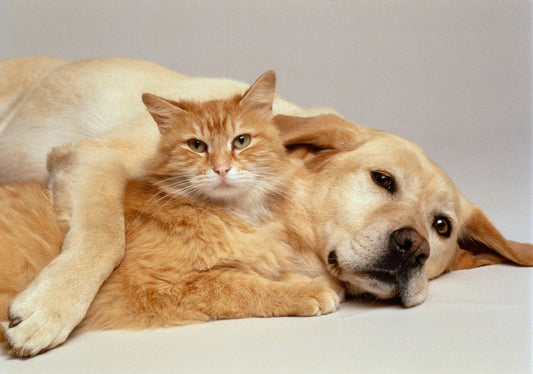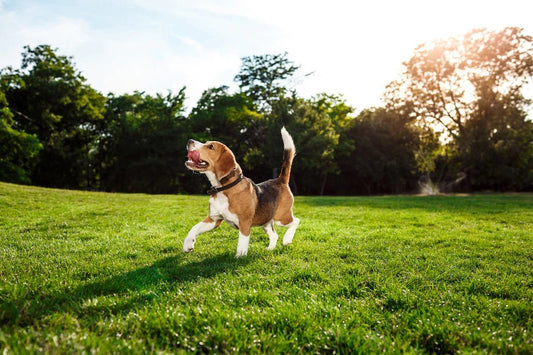We don’t need to tell you how incredible dogs truly are. However, what some of you might not know is the fact that apart from being loyal and affectionate companions, dogs can be part of your healing process. Wondering what therapy dogs are? This post tells you everything you need to know about therapy dogs, along with the top 7 therapy dog breeds you can find in India.
Therapy Dogs: What Do They Do?
Lovingly referred to as “comfort dogs,” therapy dogs are trained to provide people with emotional support and affection. And these dogs are great for not just individuals in need but also to help and interact with people in hospitals, nursing, and retirement homes, disaster-stricken areas, and so on.
The practice of training and using therapy dogs came into existence in the 19th century, but dogs have been assisting people with emotional or psychological challenges long before that. In many cases, these dogs can also do the duties of service dogs with the right training.
Here are the major traits a dog should possess to get certified as a therapy dog:
They should be over a year old and have received the necessary dog vaccinations.
They should be calm and friendly with strangers.
They shouldn’t be sensitive to fast movement, bright light, or loud noises.
They should be highly adaptable and adjust to any circumstance they find themselves in.
They should be comfortable with any kind of human contact, especially unpredictable movements and actions.
Got a basic idea of what therapy dogs are? It’s now time to list the top 7 dog breeds that can potentially work as therapy dogs in India.

Therapy dog breed #1: German Shepherd

The first and most important quality that makes a German Shepherd a great therapy dog is its intelligence. Bred and raised as guard and herding dogs for years, this breed possesses an adaptive intelligence that places them among the most intelligent dog breeds in the world.
German Shepherds also happen to have great instincts. They’re great at following commands, enjoy pleasing their owners, and will be perfectly friendly around people when socialized at an early age.
The high intelligence level of this breed makes them good at being both service and therapy dogs. With the right training, these dogs can achieve anything they set their minds to.
While training your German Shepherd to be a therapy dog, make sure to teach them how to differentiate between playtime and therapy time. Being highly athletic in nature, they might try to play with every stranger they meet unless taught otherwise. For this reason, it is also important to provide them with enough exercise and playtime daily so that they don’t seek it during therapy time.
Therapy dog breed #2: Indian Pariah Dog

Also referred to as “INdogs” or “Indian Native Dogs,” the Indian Pariah Dog is the most common breed you’d find on Indian streets. In addition to their high immunity and compatibility, these dogs are intelligent, adaptable, and vigilant.
Indian Pariahs also have a high trainability level, which is why they’re also used as guard dogs by the police force. But how would you know that they can become therapy dogs? Because of their highly social nature. These dogs get along well with both children and adults and other animals. They’re not only affectionate but can also remain calm in the face of any adversity when trained properly.
Therapy dog breed #3: Beagle

Staying in control of one’s temper is a vital quality for a therapy dog. And you can’t find a calmer breed for this job than the Beagle. These little furballs are among the most even-tempered dogs you could find and tend to grow tranquil as they mature.
In addition to being even-tempered, Beagles are also friendly, affectionate, and comfortable with being touched and petted: all the qualities a therapy dog should ideally possess.
That being said, your Beagle would require intense behavioral training from a professional because they can also be stubborn and willful at times.
Therapy dog breed #4: Golden Retriever

A therapy dog’s focus should ideally be to keep their companions happy and comfortable. If there’s a dog breed that excels in this quality, it’s the Golden Retriever. Driven by the urge to please others, these dogs can bring joy and brightness in the lives of anyone they meet, helping them heal from within.
Golden Retrievers are pure softies at heart; they’re kind, gentle, devoted, and get attached to people really quickly. And when they form a bond with someone, it runs very deep.
Despite their large size, this breed is surprisingly well-mannered and is friendly with children, seniors, and other animals. The only issue with them becoming therapy dogs is their high energy levels, particularly at a younger age. Proper training helps them channel that energy and they can soon be on their way to being a perfect therapy dog.
Therapy dog breed #5: Labrador Retriever

Similar to Golden Retrievers in both size and appearance, Labrador Retrievers are another dog breed that is quite popular as pets globally. While these breeds hail from different parts of the world, they were both bred as working dogs and share a similar temperament as well.
If you’re looking for differences between the two breeds, you will find Labradors to be more energetic, which makes them better suited for families with children. For this reason, they also need slightly intense behavioural training sessions to become therapy dogs.
Another difference is that Golden Retrievers are capable of entertaining themselves for a longer time without their owners. But as far as therapy dogs are concerned, this quality should only give the latter an edge.
Therapy dog breed #6: Pug

If you’re looking for a smaller therapy dog, a pug is your best choice. These little canines are low-maintenance in terms of both grooming and exercise and are also fast learners.
This smart breed can be trained very easily and is generally well-mannered. Pugs are friendly, get along well with most people, more so with the elderly, and enjoy lots of petting.
Pugs are naturals at learning and respecting boundaries. They’re quick to understand cues, both verbal and non-verbal, and rarely do anything that could upset their owners. This kind of understanding comes in very handy as a therapy dog, which is why they’d never disappoint you.
Therapy dog breed #7: Pomeranian

Last but not the least, Pomeranians have recently made their way into the list of therapy dogs. Due to their tendency to bark incessantly, people didn’t expect them to do well as therapy dogs. But they can easily be trained to control their barking and become ideal therapy dogs. They are an affectionate, loyal, and kind breed that can make perfect companions for those who seek emotional support.
Pomeranians can be perfect therapy dogs for the elderly because both their energy levels and exercise needs are moderate. In other words, if you’d want them to, they could practically sit on your lap all day long and be happier about it than you.
When you, or someone close to you, need a therapy dog, we understand how important it is for you to make the right choice. This is why we’ve been careful in curating the list of 7 best therapy dog breeds, and we hope this has been useful!











